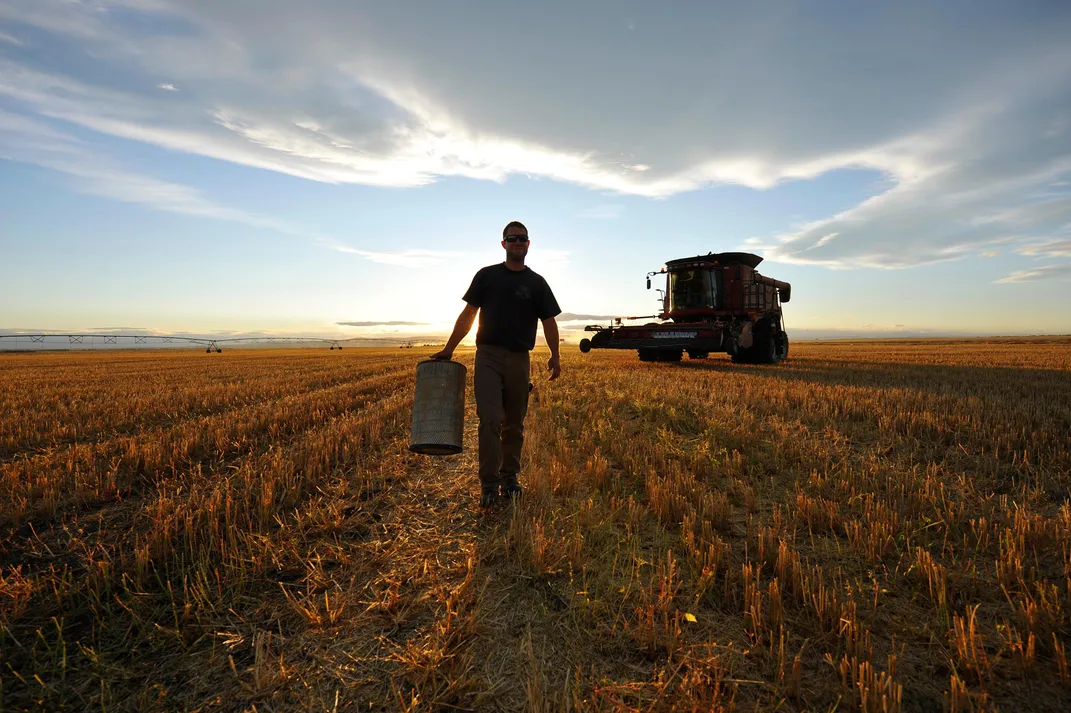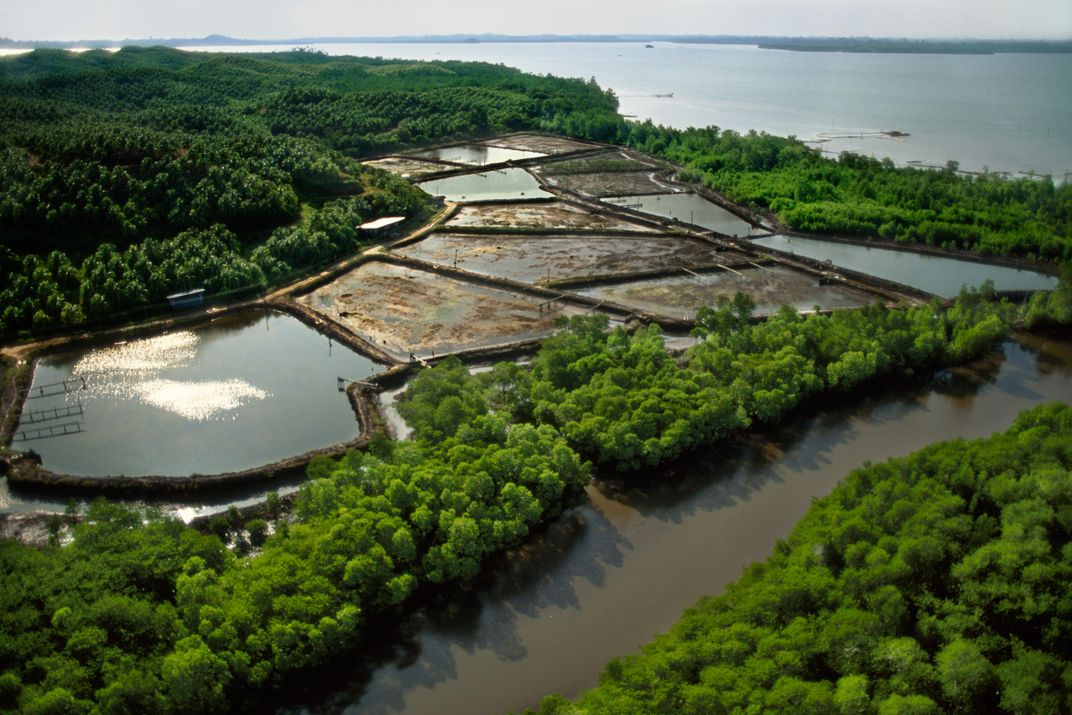The World Hit “Peak Chicken” in 2006
The popular poultry is just one of many key food resources that hit peak production between 5 and 30 years ago
/https://tf-cmsv2-smithsonianmag-media.s3.amazonaws.com/filer/a6/e4/a6e424d1-e1db-41b7-9964-74e563d5598e/42-15261549.jpg)
The world may not be as close to peak oil as once believed, but peak food, it seems, has already passed.
Energy experts warned in the late 20th century that the world would soon use up its supply of oil, and that production rates were about to plateau. That gloomy prophecy fell flat when oil production accelerated in the last decade, buying us a sort of contract extension on our energy use habits. However, according to research recently published in Ecology and Society, production of the world’s most important food sources has maxed out and could begin dropping—even as the Earth’s human population continues to grow.
Ralf Seppelt, a scientist with the Helmholtz Centre for Environmental Research in Germany, and several colleagues looked at production rates for 27 renewable and nonrenewable resources. They used data collected from several international organizations, including the Food and Agriculture Organization and the International Union for Conservation of Nature, and analyzed yield rates and totals over a period of time—from 1961 to about 2010 in most cases. For renewable resources like crops and livestock, the team identified peak production as the point when acceleration in gains maxed out and was followed by a clear deceleration.
While annual production is still increasing in all the food resources analyzed—except for wild-caught fish—the rate of acceleration for most of them has been slowing for at least several years. The research team concluded that peak production of the world’s most important crops and livestock products came and went between 5 and 30 years ago. For instance, peak corn came in 1985, peak rice in 1988, peak poultry eggs in 1993, and peak milk and peak wheat both in 2004. The world saw peak cassava and peak chicken in 2006 and peak soy in 2009. This trajectory is troubling, because it means production will eventually plateau and, in some cases, even start to decline.
“Just nine or ten plant species feed the world,” says Seppelt. “But we found there’s a peak for all these resources. Even renewable resources won’t last forever.” While fertilizing soils can help maintain high yields, peak nitrogen—an important fertilizer—occurred in 1983, the study says.
Converting forest, prairie and marsh into farmland may be partially offsetting the per-acre productivity decline in many crops—though this process cannot go on forever. Seppelt and his colleagues found that acceleration of farmland conversion peaked in 1950. What's more, trees support biodiversity and serve as a sponge for atmospheric carbon, so losing more of the world’s forests to agriculture would be a global disaster.

All this might not be a problem if the human population was also stabilizing. Though we recently passed peak population, growth is not decelerating especially fast, and by 2050 there will probably be 9 billion of us and counting. Compounding the increased numbers is the fact that Asian population giants China and India are adopting diets heavier in meat—like the one that the western world has enjoyed for decades.
“It’s a bizarre and uncomfortable place to be in as an American, saying, 'If everyone acted like us, we’d all be screwed,'” says Jonathan Foley, director of the California Academy of Sciences. The trouble is that for every pound of beef produced, a cow may have eaten many pounds of nutritious grain and legumes. Other livestock species are more efficient at converting energy into flesh, but raising animals for meat or dairy is generally far more resource-intensive than growing crops for direct human use.
“[U]sing highly productive cropland to produce animal feed, no matter how efficiently, represents a net drain on the world’s potential food supply,” Foley wrote in a paper published in Nature in 2011. Almost four years later, he still believes that future food security will depend largely on a reduction of global meat consumption. Foley has calculated that the Earth would need to produce two times the food it does now to support projected future consumption rates—something that may be impossible, given the results of the study by Seppelt and his colleagues.
“That trajectory [of needing to double our food production] is not a given but more of a warning,” he says. In a way, Foley says, this is good news: “It means we will have to change how we eat and use food.” One of the biggest—and perhaps easiest—gaps to close in food production is in the waste stream. Foley notes that 30 to 40 percent of food grown globally for direct human consumption winds up uneaten. In developing nations, he says, this waste tends to occur before food reaches the retail market and could be addressed with improvements to local harvest and transport systems. In developed nations, waste tends to occur after food reaches consumers. Addressing this is largely a matter of individual awareness, says Foley. He points out that a great deal of packaged food is discarded because it has passed the sell-by date, which is not a reliable indicator of spoilage.
While Seppelt recognizes that the peak oil crisis never panned out, he agrees that deferring peak food production may not be possible: “For food production there are less options for increasing efficiency,” he says. “We don’t believe peak production can be shifted into the future.” Instead the best chance of increasing yields is looking for regions and crops that have not yet been pushed to their limits.

One food source that has not yet peaked is aquaculture, or the farming of fish and shellfish. Yield gains are still accelerating, though the environmental costs of the global aquaculture industry could be huge if major farms continue to operate as they do today. Tropical shrimp production has been implicated in severe watershed pollution and coastal wetland destruction. In colder waters, salmon farms—mostly in Chile, northern Europe and Canada—also cause waste problems and have dented the numbers of local wild fish. Fish farms also rely on intensive harvest of feed fish, like sardines and anchovies, to grow captive species like salmon, yellowtail and tuna. Not only is this use of one edible resource to produce another considered wasteful, but some fear it could cause a collapse of feed fish populations. This, in turn, might mean the end of many aquaculture operations.
Casson Trenor, a sustainable fisheries proponent and author in San Francisco, argues that the world’s wealthier people must eat less fish and literally share the ocean’s protein sources with the poor. He says 1.5 billion impoverished people who depend on seafood don't have any alternatives.
“These people are going to get hit first [when wild seafood supplies run short], and it’s not like they can just go to the store and buy beef instead,” Trenor says. He expects world protein shortages could spur desperation and violence. “It’s hard to maintain a peaceful society when there isn’t enough food to go around,” he says.
Foley foresees similar unrest. “But we probably won’t feel the impacts in the U.S.,” he says. “We tend to be pretty immune to instability [in the food economy].” He expects that food shortages and riots in poorer nations will be a part of the transformation process as the globe shifts to a more sustainable diet.
/https://tf-cmsv2-smithsonianmag-media.s3.amazonaws.com/accounts/headshot/Off-Road-alastair-bland-240.jpg)
/https://tf-cmsv2-smithsonianmag-media.s3.amazonaws.com/accounts/headshot/Off-Road-alastair-bland-240.jpg)